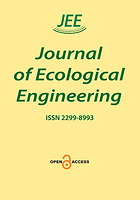
Photo from archive.org
The aim of the research was to compare the accumulative macroand microelements in the shoots of Carex acutiformis, Carex echinata, Carex paniculata, Carex remota and Carex rostrata. The content of… Click to show full abstract
The aim of the research was to compare the accumulative macroand microelements in the shoots of Carex acutiformis, Carex echinata, Carex paniculata, Carex remota and Carex rostrata. The content of components in the shoots of the plants was analyzed in relation the chemical composition of the soil. The research was done within the area of four mid-forest spring niches situated in the valley of a tributary of the Słupia River located within the area of Leśny Dwór Forest Inspectorate (Northern Poland). The examined species of Carex, in comparison to other plants in spring niches, were characterized by an average capacity to accumulate both macroand microelements, which results in little interest in these species when planning artificial buffer zones. Out of the analyzed species, the shoots of C. echinata accumulated the largest quantities of Mg, Zn and Mn, the shoots of C. paniculata –Fe, C. remota – K, Ni, Al and Sr, C. acutiformis – N and P, and the shoots of C. rostrata –Ca and Cu. Similarities between the species of Carex, which resulted from their accumulative properties, were discovered. C. echinata and C. rostrata were characterized by high levels of bioconcentration factors (BF) for Sr, Cu and Ca and low BF for K. C. paniculata and C. remota represented high BF levels for Ni and Mg and low BF levels for Sr, Al, Mn, Cu, Ca, Fe and N. On the other hand, C. acutiformis was characterized by high BF levels for P, K and Mn. In spite of an average accumulative capacity, the examined species of Carex were characterized by highly developed surface and underground zones which had effective impact on the retention of pollutants.
Journal Title: Journal of Ecological Engineering
Year Published: 2017
Link to full text (if available)
Share on Social Media: Sign Up to like & get
recommendations!